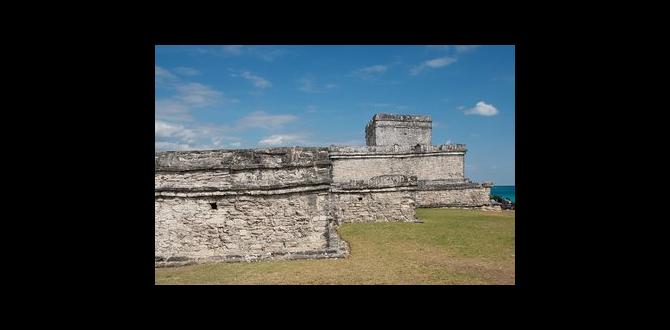Dreaming of visiting Arches National Park but worried about the cost? You’re in the right place! Beautiful red rock landscapes and natural wonders don’t have to break the bank. This guide is packed with practical, easy-to-follow tips to help you experience the magic of Arches National Park without overspending.
We’ll cover everything from planning your trip to saving money on food and accommodation, ensuring your adventure is both memorable and affordable. Get ready to explore the stunning formations on a budget! Arches National Park is a truly magical place, filled with towering sandstone fins, massive balanced rocks, and, of course, incredible natural arches.
Many people think visiting such a renowned national park requires a hefty budget, but that’s not the case at all! Planning a trip can feel a little overwhelming, especially when you’re trying to keep costs down. Don’t let that stop you from experiencing its wonders. This guide is designed to make your Arches adventure stress-free and budget-friendly. We’ve gathered the best tips and tricks so you can focus on the breathtaking scenery.
Planning Your Budget-Friendly Arches Adventure
When it comes to making the most of your trip to Arches, smart planning is your best friend. Thinking ahead saves you money and ensures you don’t miss out on the park’s highlights. Let’s break down the key steps to a financially savvy visit.
Best Time to Visit for Savings
The timing of your visit can significantly impact your budget. Peak season prices for lodging and services are often higher, and crowds can make the experience feel rushed.
Shoulder Seasons (Spring & Fall): Traveling in April, May, September, or October can offer a great balance. The weather is generally pleasant, and you’ll often find lower accommodation rates compared to the summer months. The park is less crowded, allowing for a more intimate experience with the landscapes.
Avoid Major Holidays: Prices spike around national holidays and during popular school break periods. Aim for dates outside these busy times.
Winter Visits: While colder, visiting Arches in the winter (November through March) can be the most budget-friendly option. Lodging near Moab is typically cheaper, and the park is significantly less crowded. Just be prepared for potential snow and ice on trails, which can limit access to some areas.
Entry Fees and Passes: Your First Cost Consideration
The entrance fee to Arches National Park is a fixed cost, but how you pay it can be a budget saver.
Per Vehicle Fee: As of my last update, the standard entrance fee is $30 per vehicle. This fee is valid for seven consecutive days. You can purchase this at the park entrance stations or online.
America the Beautiful Pass: If you plan to visit multiple national parks within a year (or even just two or three), the America the Beautiful Pass is an excellent investment. For $80, it covers entrance fees for a full year to all National Parks and Federal Recreational Lands. This pass can save you a significant amount if you’re a frequent park visitor. Learn more about the pass on the National Park Service website.
Timed Entry System: Arches often operates under a timed entry system during peak season (typically April through October) to manage crowds. While this doesn’t add to the cost, keep an eye on the park’s official website for reservation requirements. Booking your timed entry slot in advance is crucial and free to do.
Accommodation Options on a Dime
Where you stay can be one of the biggest expenses. Thankfully, there are several budget-friendly choices near Arches.
Camping Inside the Park: Devils Garden Campground is the only campground located inside Arches National Park. It’s incredibly scenic but also very popular and requires reservations months in advance, especially during peak season. The cost is significantly lower than hotels.
Camping Outside the Park: Several campgrounds exist in and around Moab, offering more availability and often lower prices than in-park options. These can range from primitive BLM (Bureau of Land Management) sites with minimal amenities to established campgrounds with full facilities. Research options like Sand Flats Recreation Area or dispersed camping on BLM land for truly budget-friendly experiences. Remember to check regulations for any “Leave No Trace” requirements.
Budget-Friendly Motels and Hotels in Moab: Moab is the gateway town to Arches and offers a range of lodging. Look for motels and hotels slightly off the main drag or explore options that offer longer-stay discounts. Booking in advance, especially during busy seasons, is essential.
Vacation Rentals (Airbnb/VRBO): For families or groups, renting a small house or apartment can sometimes be more economical than multiple hotel rooms, especially when you factor in the ability to cook some of your own meals. Compare prices carefully.
Hostels: Moab has a few hostel options that provide dormitory-style or private rooms at very affordable rates. This is a great choice for solo travelers or those looking to connect with other adventurers.
Example Accommodation Cost Comparison (Estimates)
| Accommodation Type | Estimated Nightly Cost (Low Season) | Estimated Nightly Cost (Peak Season) | Notes |
| In-Park Camping | $25 – $30 | $30 – $40 | Requires advance reservation; very popular. |
| Outside-Park Camping | $15 – $40 | $30 – $60 | Varies by amenities and location. |
| Budget Motel/Hotel | $80 – $150 | $150 – $300+ | Prices fluctuate significantly based on demand. |
| Vacation Rental (Studio) | $100 – $200 | $200 – $400+ | Can be cost-effective for groups/longer stays. |
| Hostel (Dorm Bed) | $30 – $50 | $50 – $70 | Ideal for solo travelers; communal atmosphere. |
Transportation: Getting Around Smartly
While you’ll need a vehicle to reach Arches and explore Moab, there are ways to optimize your travel costs.
Drive Your Own Vehicle: If you have your own car, this is often the most budget-friendly option. Ensure your vehicle is in good condition, especially tires, as you’ll be driving on desert roads.
Renting a Car: If you need to rent, book as far in advance as possible. Compare prices across different rental companies and consider off-airport locations for potentially lower rates. Look for fuel-efficient models.
Carpooling: If traveling with friends or family, carpooling is a must to share fuel and entry costs.
Limited Public Transport: Within Moab, there are some local bus services, but they are not extensive enough for reliable park access. Once inside Arches, you’ll need your own transportation for most scenic drives and trailheads.
Saving on Food and Drinks During Your Trip
Eating out for every meal in a tourist town can add up quickly. Packing your own food offers significant savings and convenience.
Prepare Your Own Meals
This is arguably the biggest money-saver. Arches National Park is a place for nature, so embracing a more self-sufficient approach to food is key.
Picnic Lunches: Pack sandwiches, wraps, fruit, snacks, and plenty of water. Enjoying a meal with an iconic view is an unforgettable experience and incredibly cheap.
Camping Stove Cooking: If you’re camping or staying in accommodation with kitchen facilities, plan simple meals you can cook over a campfire or portable stove. Think pasta, chili, stir-fries, or pre-marinated meats for grilling.
Cooler is Your Best Friend: Invest in a good cooler and keep it stocked with ice. This allows you to bring perishable items like cheese, deli meats, yogurt, and drinks, saving you from expensive convenience store purchases.
Breakfast: Cereal, oatmeal, bagels, or even hard-boiled eggs can make for a quick and affordable breakfast before you head out for the day.
Grocery Shopping Strategies
Shop Before Arriving: Stock up on groceries in a larger city before you reach Moab, as prices can be higher in smaller tourist towns.
Moab Grocery Stores: If you need to shop in Moab, look for larger supermarkets rather than convenience stores. These will offer better prices and a wider selection.
Pack Non-Perishables: Bring plenty of non-perishable snacks from home: granola bars, trail mix, dried fruit, crackers, jerky, and nuts. These are perfect for stuffing into daypacks for hikes.
Water: You Can’t Forget This!
Staying hydrated in the desert is critical, and buying bottled water repeatedly is expensive and environmentally unfriendly.
Reusable Water Bottles: Bring multiple reusable water bottles for everyone in your group.
Water Refill Stations: The park has potable water stations (check the NPS website for current locations) where you can refill your bottles for free. Campgrounds and visitor centers also often have water access.
Hydration Packs: For more strenuous hikes, consider a hydration pack (like a CamelBak) for easy access to water while on the move.
Making the Most of Your Visit: Activities and Gear
Beyond food and lodging, how you approach activities and what you bring can also impact your wallet.
Free and Low-Cost Activities
The main attraction at Arches National Park – its stunning natural beauty – is free to enjoy once you’re inside!
Hiking: Arches offers a range of hiking trails for all fitness levels. The most popular, like the hike to Delicate Arch or Landscape Arch, are free to access. These are the heart of the Arches experience!
Scenic Driving: The main park road offers breathtaking views and access to numerous viewpoints. Simply driving through the park and stopping at pull-offs is a fantastic way to see a lot.
Stargazing: Arches is an International Dark Sky Park. On a clear night, the stargazing is absolutely incredible. Find an open spot away from lights and marvel at the Milky Way – it’s a free, world-class show.
Photography: Capture the iconic landscapes. Golden hour, during sunrise and sunset, offers the most dramatic light for stunning photos.
Visitor Center: Stop by the Arches Visitor Center near the park entrance. You can get maps, talk to rangers about trail conditions, and learn about the park’s geology and history. These resources are free and invaluable.
Essential Gear for Budget Travelers
Bringing the right gear from home can save you money on rentals and impulse purchases.
Footwear: Comfortable, broken-in hiking boots or sturdy athletic shoes are essential. You don’t need the most expensive gear, but good support is vital for enjoying the trails.
Sun Protection: A wide-brimmed hat, sunglasses, and sunscreen are non-negotiable. The desert sun is intense.
Daypack: A comfortable daypack is crucial for carrying water, snacks, extra layers, and your camera.
Layers of Clothing: Temperatures can fluctuate greatly in the desert. Pack lightweight, breathable layers you can add or remove.
First-Aid Kit: A basic first-aid kit is always a good idea for minor scrapes and blisters.
Navigation: While trails are generally well-marked, a physical map of the park (available at the visitor center) is a wise backup to your phone GPS. Consider downloading offline maps from services like Google Maps or AllTrails.
Headlamps/Flashlights: Essential if you plan for sunrise/sunset hikes or stargazing, and always a good safety item to have.
Consider Renting Gear Wisely
If you don’t own certain items or don’t want to pack them, consider rentals in Moab for specific needs, but always compare costs.
Camping Gear: If you’re not a frequent camper, renting a tent, sleeping bags, and pads from an outdoor shop in Moab might be more cost-effective than buying.
High-End Photography Equipment: If photography is a serious hobby and you need specific lenses or tripods, a local rental shop might be an option, but often purchasing usable gear secondhand beforehand is cheaper.
Bikes: Moab is a world-renowned mountain biking destination. If this is part of your plan, renting a bike is likely necessary, but factor this cost into your budget. Look for deals.
Example Budgeting Breakdown for a 3-Day Trip
Here’s a sample budget to illustrate how you can manage costs for a short trip to Arches. This assumes two people traveling and opting for budget-friendly choices.
| Category | Estimated Low Cost (Per Person) | Estimated Moderate Cost (Per Person) | Notes |
| Park Entrance Fee| $15 (with pass) | $15 (with pass) | Assuming shared cost of $30 per vehicle or $80 annual pass. |
| Accommodation | $75 (2 nights camping) | $150 (2 nights budget motel) | Camping is cheapest; motels vary wildly. |
| Food & Drinks | $75 (self-catered) | $150 (mix of self-catered & casual) | Depends heavily on how much you prepare yourself. |
| Gas/Transportation| $50 | $75 | Based on driving distance to Moab and local travel. |
| Miscellaneous | $25 (souvenir, small treat) | $50 (souvenirs, guided tour option) | Optional extras. |
| Total (Per Person)| $240 | $440 | This is a rough estimate; actual costs will vary. |
This breakdown shows that prioritizing camping and self-prepared meals can dramatically reduce overall costs.
Additional Budget-Saving Hacks for Arches
Beyond the essentials, a few extra tricks can help you stretch your travel dollar even further.
Free Visitor Centers: Utilize the free park visitor centers for information, maps, and ranger talks that enhance your understanding and enjoyment without spending extra money.
Pack Snacks on Hikes: As mentioned, carrying your own snacks and water means you won’t be tempted by overpriced items at limited park concessions (if any are even available).
Look for Free Events: Sometimes Moab or nearby towns have free concerts, art walks, or ranger programs that can offer evening entertainment for free or cheap.
Consider a Longer Stay: While it might seem counterintuitive, sometimes staying for an extra day or two and spreading out your exploration can feel more relaxed and allow you to find better deals on lodging by avoiding weekend surges.
Discounted Gear: If you need to buy gear before your trip, hit up outdoor gear outlet stores or used gear shops. Many reputable brands sell perfectly good items at a discount.
Travel Off-Peak: If your schedule is flexible, traveling during the absolute quietest times of the year (late fall, winter, early spring) will yield the lowest prices for lodging and car rentals, hands down.
FAQs
Is Arches National Park expensive to visit?
Arches National Park itself can be very affordable, especially if you focus on hiking and scenic drives. The main costs are the park entrance fee and your accommodation. By planning ahead and choosing budget-friendly options for lodging and food, you can significantly reduce the overall expense.
What is the cheapest way to stay near Arches?
Camping is generally the cheapest option. This includes campgrounds inside the park (Devils Garden) or numerous campgrounds in and around Moab. Primitive or dispersed camping on BLM land can be even cheaper or free, but with fewer amenities.
Do I need to book timed entry for Arches?
Yes, Arches National Park often requires a timed entry reservation during its peak season (typically April through October) to manage visitor numbers. This reservation is free to make but crucial to secure in advance through recreation.gov.





